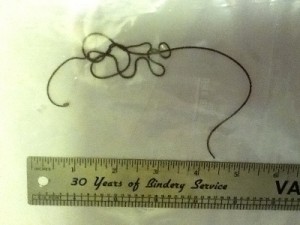
Nematomorpha (Hairworm), better known as the “horsehair worm,” is one of the most unusual parasitic worms on earth today. What’s so unusual about them (well at least one unusual thing about them) is where they prefer to live. Also called Cabbagehair, Gordiacea, Gordiid, and Gordian Worm, the horsehair worm is a parasite that lives inside crickets, cockroaches, grasshoppers, beetles, and other anthropod pests. These odd threadlike or hair-like creatures can grow up to 3.2 feet (one meter) and only 0.03 inches (3 millimeters) in diameter. If you have observed the horsehair worm emerging from the body of a larger animal or anything other than an insect, it was probably inside of the cricket, cockroach or beetle that was just ingested by the larger animal.
The horsehair worm belongs to the roundworm family. This unique worm earned the name based on the way it looks. The horsehair worm looks like the thin hair of a horsetail. Horsehair worms are typically dark brown in color, but some are tan, yellow or black. They usually peak during the late summer as well as during the fall months. Finding horsehair worms in odd places is not uncommon. They have been spotted emerging from a cricket on the kitchen floor of homes or in the toilet after a cricket has been dumped there, and they have even been spotted in pet’s water bowls. They can also be found swimming around in lakes, rivers, streams, and garden ponds.
The life cycle begins when a male and female horsehair worm mate in soil or freshwater. The female can lay as many as 10 million eggs. She typically lays her eggs in water plants. Once the eggs hatch into larvae, they live inside cysts in vegetation — vegetation that is ingested by crickets, grasshoppers and other insects or bugs. Once ingested, the cysts dissolve inside of the grasshopper or cricket gut. The parasite makes its way into the body cavity of the insect where it absorbs nutrients from the insects’ food through the body wall.
The horsehair worm is so thin that it can develop and grow to its maximum length inside the body cavity of small cricket. However, the usual length of time that a horsehair worm will develop inside the host is 4-20 weeks. Amazingly, once the horsehair worm reaches maturity inside of the host, it can live out the rest of its life from the nutrients and energy obtained from the host. Another amazing thing about the horsehair worm is its ability to manipulate its body into many forms. The horsehair worm can even twist itself into a ball that resembles a Gordian knot, hence the name, Gordian Worm.
When the horsehair worm is ready to exit its host, usually when the host is near or in water, it will wiggle out of the nearest opening. This is not always the case, however. They have also been known to exit on dry land. Once the horsehair worm exits the body of an insect (and if it does not find another host), this emerging actually completes the life cycle. If you dare, you can witness the horsehair worm exiting the body of a cricket here. Warning: this is not a pretty sight.
How to Get Rid of Horsehair Worms
Horsehair worms can only parasitize suitable insect hosts, so after crushing pests such as crickets, millipedes, or centipedes, the worms will quickly exit the body and crawl for cover. Unless you kill them right after exiting the body, they parasitize another insect. That said, because they are not harmful to humans and because they actually kill harmful pests such as grasshoppers, crickets, cockroaches, beetles, millipedes, centipedes, snails, slugs, etc., no control measures are recommended.
If you have a horsehair worm problem, you can:
- Use plain water to get rid of them (you can spray them)
- Install a mesh filter or screen to keep the worms from water pumped from a surface supply such as a farm pond or canal
- Treat domestic water supply systems by filtering and treating with chemicals under the direction of the local health department
To keep parasitized insects out of your home, you should caulk or seal entry sites. If you kill an insect, make sure you take it out of the home immediately. If you flush it, the horsehair worm will escape from the insect’s body through the toilet. You can also place an insecticide barrier around your house foundation to kill any arthropod pests infested with horsehair worms.
All About Worms is always free, always reader-supported. Your tips via CashApp, Venmo, or Paypal are appreciated! Receipts will come from ISIPP Publishing.



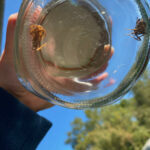
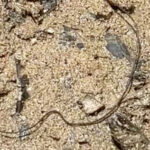
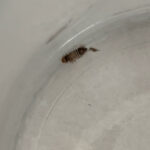

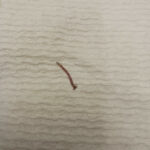
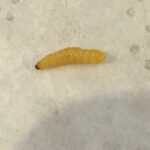
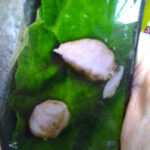
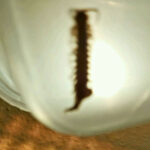

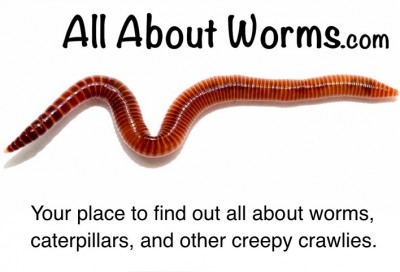
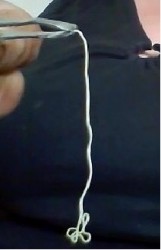


I am also infected by this for years now and the doctors I have seen disregard anything concerning worms or parasites and have no idea how to help me. These “hair creatures” are always in my clothes and come out of my hair. I have used all the common dewormers and only Fenbendazole helps. You can get this as a paste used for horses without prescription. If you are infected by any parasite or worm I wish you well and understand the misery of parasites taking over your body.
Myself and my parner have a horsehair worm infection. Doctors don’t seem bothered. We were really conserened, as thes worms move under our skin. Then a hair like worm just appears out of our finger. We don’t know if we are contages to others. We have been given co- amoxiclav by doc at a&we, who didn’t even look at us.